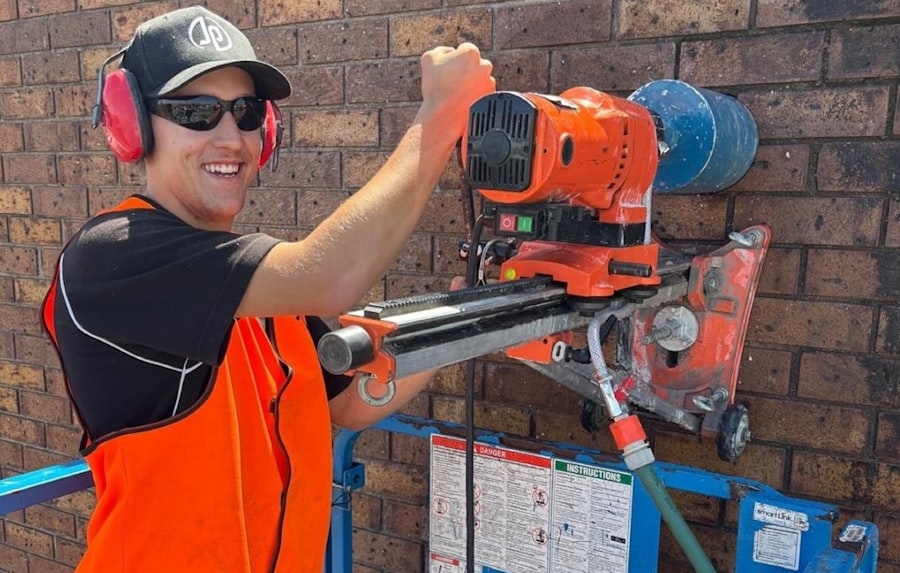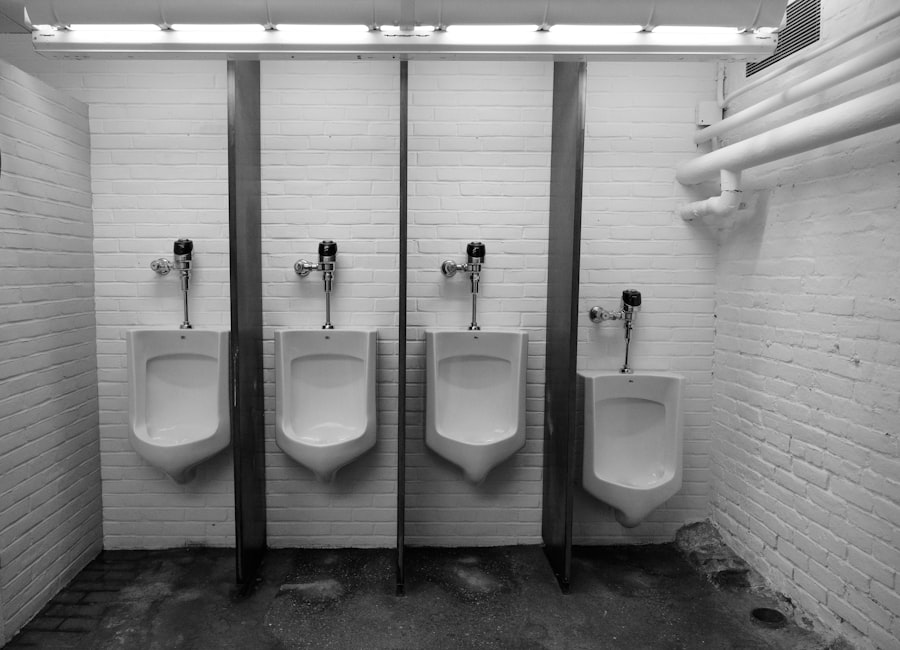Plumbing leaks can often go unnoticed until they escalate into significant issues. Recognizing the early signs of a leak is crucial for homeowners to prevent extensive damage and costly repairs. One of the most common indicators of a plumbing leak is the presence of unexplained water stains on walls or ceilings.
These stains may appear as dark patches or discoloration, signaling that water is seeping through materials. Homeowners should also be vigilant about damp spots on floors or around fixtures, as these can indicate a hidden leak that requires immediate attention. Another telltale sign of a plumbing leak is an increase in water bills without any corresponding increase in water usage.
If a household’s water consumption remains consistent, yet the bill continues to rise, it may suggest that water is escaping through a leak somewhere in the system. Additionally, the sound of running water when all faucets are turned off can be a clear indication of a leak. This persistent sound may be subtle, but it can be a significant clue that something is amiss within the plumbing infrastructure.
Key Takeaways
- Water stains, mold, and musty odors are common signs of a plumbing leak
- Leaks can originate from pipes, fixtures, or appliances, and may be hidden or visible
- Tools such as moisture meters, infrared cameras, and acoustic devices can help detect leaks
- Repair methods include pipe sealing, fixture replacement, and re-piping
- Professional plumbers have the expertise and equipment to handle complex leaks efficiently
Identifying the Source of the Leak
Once signs of a plumbing leak are detected, the next step is to identify its source. This process can sometimes be straightforward, especially if the leak is visible, such as water pooling under a sink or dripping from a pipe. However, many leaks occur in hidden areas, making detection more challenging.
Homeowners should start by inspecting areas where plumbing is present, including under sinks, behind appliances, and in basements or crawl spaces. A thorough visual inspection can often reveal cracked pipes, loose fittings, or corroded joints. In some cases, identifying the source may require more advanced techniques.
Homeowners can utilize their sense of smell to detect leaks; a musty odor often accompanies mold growth, which can indicate prolonged moisture exposure due to a leak. Additionally, using moisture meters can help pinpoint areas with excessive humidity that may not be immediately visible. If the source remains elusive, it may be necessary to consult with a professional who has experience in leak detection and can employ specialized equipment to locate the problem accurately.
Tools and Equipment for Detecting Leaks

Detecting plumbing leaks effectively often requires specific tools and equipment designed for this purpose. One of the most common tools used by both professionals and DIY enthusiasts is a moisture meter. This device measures the moisture content in various materials, helping to identify areas that may be affected by leaks.
By taking readings in different locations, homeowners can pinpoint potential problem areas and take appropriate action. Another valuable tool for leak detection is an infrared camera. This technology allows users to visualize temperature differences in walls and ceilings, which can indicate moisture presence.
When water leaks into building materials, it often causes temperature variations that can be detected with infrared imaging. This method is particularly useful for locating hidden leaks behind walls or under floors without causing damage to the structure. Additionally, acoustic leak detection equipment can help identify leaks by amplifying the sound of water escaping from pipes, making it easier to locate the source of the problem.
Methods for Repairing Common Plumbing Leaks
| Leak Type | Repair Method |
|---|---|
| Leaking Faucet | Replace the washer or O-ring |
| Leaking Pipe | Use a pipe clamp or epoxy putty |
| Leaking Toilet | Replace the flapper or flush valve |
| Leaking Showerhead | Replace the showerhead or use thread seal tape |
Repairing plumbing leaks can vary in complexity depending on their location and severity. For minor leaks, such as those found in faucet fixtures or showerheads, homeowners can often perform simple repairs themselves. Replacing worn washers or O-rings is a common solution for dripping faucets, while tightening loose connections can resolve leaks at joints.
These straightforward fixes typically require minimal tools and can save homeowners both time and money. For more significant leaks, such as those found in pipes or behind walls, professional intervention may be necessary. In some cases, homeowners may need to cut out sections of damaged pipe and replace them entirely.
This process involves shutting off the water supply, draining the affected area, and using appropriate materials to ensure a secure fit. Additionally, applying pipe sealant or using epoxy putty can provide temporary fixes for small cracks until more permanent repairs can be made. Regardless of the method chosen, addressing plumbing leaks promptly is essential to prevent further damage and maintain the integrity of the plumbing system.
Hiring a Professional Plumber for Complex Leaks
While some plumbing leaks can be managed by homeowners themselves, others require the expertise of a professional plumber. Complex leaks often involve intricate systems that may not be easily accessible or visible. For instance, leaks within walls or underground pipes necessitate specialized knowledge and tools that most homeowners do not possess.
Hiring a licensed plumber ensures that the issue is diagnosed accurately and repaired effectively. Professional plumbers bring valuable experience to the table, allowing them to identify underlying issues that may not be immediately apparent. They are equipped with advanced tools for leak detection and repair, which can save time and prevent further damage to the property.
Moreover, professional plumbers are familiar with local building codes and regulations, ensuring that any repairs made are compliant and safe. In situations where extensive damage has occurred due to prolonged leaks, enlisting a professional’s help becomes even more critical to restore the plumbing system to its optimal condition.
Preventative Measures to Avoid Future Leaks

Regular Inspections of Plumbing Systems
One effective strategy is to conduct regular inspections of plumbing systems, including checking for signs of wear and tear on pipes and fixtures. Homeowners should pay particular attention to areas prone to corrosion or damage due to temperature fluctuations, such as basements and attics.
Insulating Pipes and Maintaining Appliances
Additionally, insulating pipes can help prevent freezing during colder months, reducing the risk of cracks and subsequent leaks. Homeowners should also be proactive about maintaining their appliances that use water, such as washing machines and dishwashers. Regularly checking hoses for signs of wear and replacing them as needed can prevent unexpected failures that lead to leaks.
Reducing the Risk of Plumbing Leaks
By implementing these preventative measures, homeowners can significantly reduce their risk of experiencing plumbing leaks in the future.
Environmental Impact of Plumbing Leaks
The environmental impact of plumbing leaks extends beyond mere inconvenience; it poses significant risks to local ecosystems and water resources. When water leaks from pipes or fixtures go unchecked, they contribute to wasted water—a precious resource that is becoming increasingly scarce in many regions around the world. According to estimates from various environmental organizations, millions of gallons of water are lost each year due to undetected leaks in residential plumbing systems alone.
Moreover, plumbing leaks can lead to mold growth and structural damage within homes, which may require extensive remediation efforts that further strain environmental resources. The chemicals used in repairing plumbing systems or treating mold can also have adverse effects on local ecosystems if not disposed of properly. By addressing plumbing leaks promptly and effectively, homeowners not only protect their properties but also contribute positively to environmental conservation efforts.
Importance of Regular Maintenance for Plumbing Systems
Regular maintenance of plumbing systems is vital for ensuring their longevity and efficiency. Just as vehicles require routine check-ups to function optimally, plumbing systems benefit from periodic inspections and maintenance tasks. Homeowners should consider scheduling annual plumbing inspections with a qualified professional who can assess the condition of pipes, fixtures, and appliances.
During these inspections, plumbers can identify potential issues before they escalate into costly repairs. Routine maintenance tasks such as flushing water heaters, cleaning drains, and checking for signs of wear on hoses and fittings can significantly extend the lifespan of plumbing systems. By prioritizing regular maintenance, homeowners not only safeguard their investments but also enhance their overall quality of life by ensuring reliable access to clean water and efficient waste disposal systems.
In conclusion, understanding plumbing leaks—from recognizing their signs to implementing preventative measures—empowers homeowners to take control of their plumbing systems effectively. By being proactive about maintenance and repairs while also considering environmental impacts, individuals can foster healthier living environments while conserving valuable resources for future generations.
If you are dealing with plumbing leaks in your home, it may be time to consider upgrading your bathroom design with statement pieces like freestanding tubs and unique vanities. Check out this article on how to elevate your bathroom design to not only fix your plumbing issues but also enhance the overall look and feel of your space.
FAQs
What are the common causes of plumbing leaks?
Common causes of plumbing leaks include corrosion, high water pressure, clogs, damaged seals, and temperature changes.
How can I detect a plumbing leak in my home?
Signs of a plumbing leak include water stains on walls or ceilings, musty odors, sounds of running water when no fixtures are in use, and an unexplained increase in water bills.
What should I do if I suspect a plumbing leak in my home?
If you suspect a plumbing leak, it is important to shut off the water supply to the affected area and contact a licensed plumber to assess and repair the leak.
Can plumbing leaks cause damage to my home?
Yes, plumbing leaks can cause significant damage to your home, including water damage to walls, ceilings, and floors, as well as potential mold growth.
How can I prevent plumbing leaks in my home?
To prevent plumbing leaks, it is important to have regular maintenance checks on your plumbing system, monitor water pressure, and address any signs of corrosion or wear and tear on pipes and fixtures.






